Since the beginning of this year, the growth rate of domestic sales of textile and clothing products has been increasing month by month. From January to May, the retail sales of clothing, shoes and hats, and textile products increased by 14.1% year-on-year, ranking second among the 16 categories of retail goods in terms of growth rate. The achievement under downward pressure stems from the huge and complete industrial system of China's clothing industry and the development resilience behind it. How can the clothing industry maintain development resilience in the second half of the year and beyond?
At the 2023 China Clothing Technology Conference, Chen Dapeng, Vice President of the China Textile Industry Federation and President of the China Clothing Association, proposed that the clothing industry needs to further shift towards high-quality development driven by technological innovation.
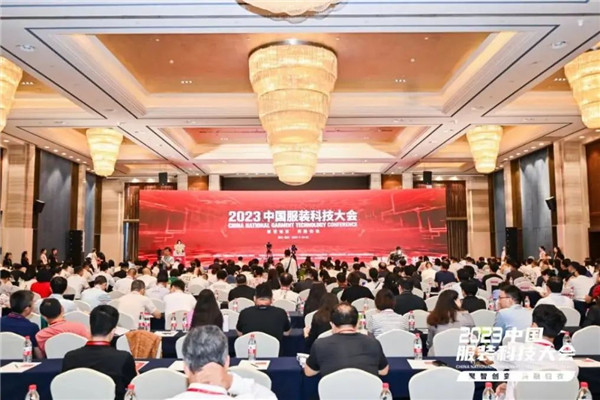
At the conference held from July 24th to 25th, authoritative experts, business leaders, and innovation pioneers from the Chinese clothing industry gathered in Linping Art and Fashion Town, Hangzhou, and jointly launched a discussion on the path of "smart" transformation.
The conference was hosted by the China Clothing Association and the People's Government of Linping District, Hangzhou. At the conference, awards such as the 2023 China Clothing Industry Science and Technology Progress Award, the 2023 China Clothing Industry Science and Technology Progress Contribution Award, and the 2023 China Clothing Industry Annual Science and Technology Innovation Figure were presented (the list is attached). The results of the second batch of "China Clothing Digital Fast Reaction Factory Level Recognition" were released. Yang Jinchun, Executive Vice President of the China Fashion Association and President of the China Fashion Science and Technology Innovation Research Institute, presided over the meeting.
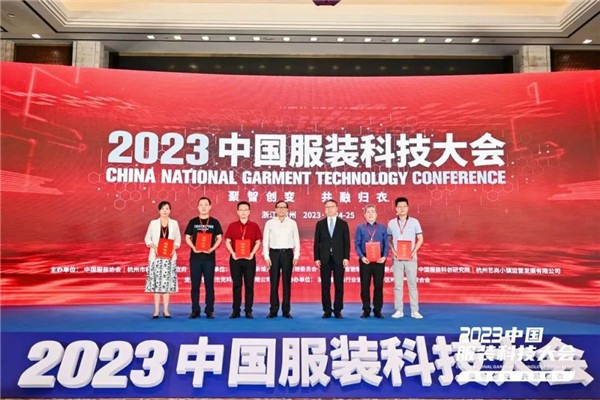
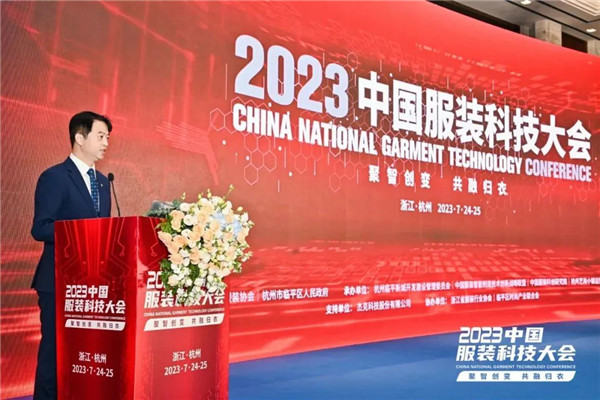
The clothing industry is a fusion of technology and culture
Becoming a consensus
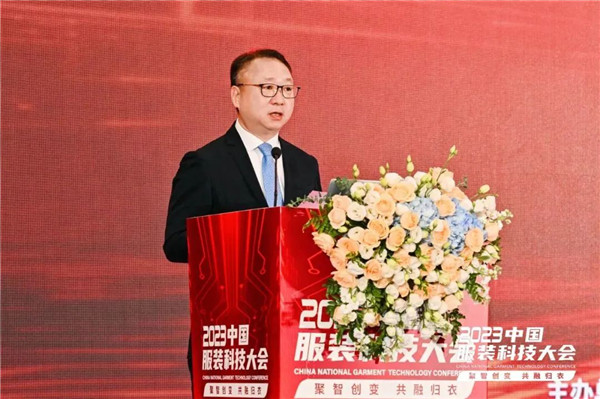
"The clothing industry is the condensation and integration of scientific and technological innovation and cultural creativity." Sun Ruizhe, president of the International Textile Manufacturers Federation and the China Textile Industry Federation, said that under the influence of changes in production methods, innovation paradigms and business models, China's textile and clothing enterprises have built a modern textile industry system with integrity, progressiveness and safety, which is a realistic choice for the moment, It is also a profound and inevitable requirement.
In response, Zhang Huaming, Chairman of Yaying Group, also stated that technological innovation and cultural arts are like wings driving high-quality development of enterprises, helping Yaying successfully transform from a manufacturing enterprise to a fashion group.
Taking Yaying as an example, the brand has built comprehensive digital capabilities, especially in the new private retail battlefield, laying out the "six tracks" - store, micro marketing, micro mall, on-site service, live streaming, and short video content, achieving deep integration of online and offline, and promoting the "five online" - store online, employee online, product online, and customer online through digitization, achieving integrated management of franchise and self operation.
In addition to clothing brands, the fashion industry cluster is also the same. Relying on the fundamental advantages of the home textile and clothing industry, Linping District of Hangzhou vigorously promotes the transformation and empowerment of "design+", "digital+", and "technology+", accelerating the construction of a "five chain integration" ecosystem of channel chain, service chain, supply chain, innovation chain, and policy chain. Currently, it has attracted more than 30 top domestic and foreign designers, gathering more than 2400 brand enterprises such as Evelyn, Yingshi, Zibuyu, and Goumei Technology, In 2022, the total output value of the fashion industry cluster in the entire region reached 13.68 billion yuan.
In response, Yu Kun, Director of the Textile Department of the Consumer Products Industry Department of the Ministry of Industry and Information Technology of the People's Republic of China, suggested that the Chinese textile and clothing industry fully grasp the transformative effects of the digital economy, take consumption upgrading as the guide, digitization as the starting point, and scenario application as the entry point, strengthen the guidance of digital concepts and digital technology applications, and coordinate the promotion of data-driven, resource aggregation, platform construction, and industry integration.
Evolution of digital interweaving
How to turn clothing enterprises into personal use
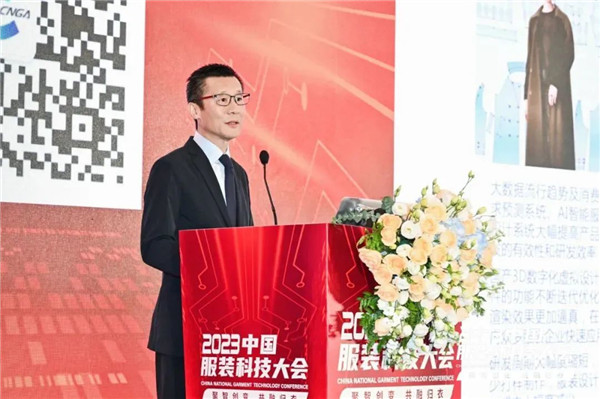
"The clothing industry is the condensation and integration of scientific and technological innovation and cultural creativity." Sun Ruizhe, president of the International Textile Manufacturers Federation and the China Textile Industry Federation, said that under the influence of changes in production methods, innovation paradigms and business models, China's textile and clothing enterprises have built a modern textile industry system with integrity, progressiveness and safety, which is a realistic choice for the moment, It is also a profound and inevitable requirement.
In response, Zhang Huaming, Chairman of Yaying Group, also stated that technological innovation and cultural arts are like wings driving high-quality development of enterprises, helping Yaying successfully transform from a manufacturing enterprise to a fashion group.
Taking Yaying as an example, the brand has built comprehensive digital capabilities, especially in the new private retail battlefield, laying out the "six tracks" - store, micro marketing, micro mall, on-site service, live streaming, and short video content, achieving deep integration of online and offline, and promoting the "five online" - store online, employee online, product online, and customer online through digitization, achieving integrated management of franchise and self operation.
In addition to clothing brands, the fashion industry cluster is also the same. Relying on the fundamental advantages of the home textile and clothing industry, Linping District of Hangzhou vigorously promotes the transformation and empowerment of "design+", "digital+", and "technology+", accelerating the construction of a "five chain integration" ecosystem of channel chain, service chain, supply chain, innovation chain, and policy chain. Currently, it has attracted more than 30 top domestic and foreign designers, gathering more than 2400 brand enterprises such as Evelyn, Yingshi, Zibuyu, and Goumei Technology, In 2022, the total output value of the fashion industry cluster in the entire region reached 13.68 billion yuan.
In response, Yu Kun, Director of the Textile Department of the Consumer Products Industry Department of the Ministry of Industry and Information Technology of the People's Republic of China, suggested that the Chinese textile and clothing industry fully grasp the transformative effects of the digital economy, take consumption upgrading as the guide, digitization as the starting point, and scenario application as the entry point, strengthen the guidance of digital concepts and digital technology applications, and coordinate the promotion of data-driven, resource aggregation, platform construction, and industry integration.
Evolution of digital interweaving
How to turn clothing enterprises into personal use
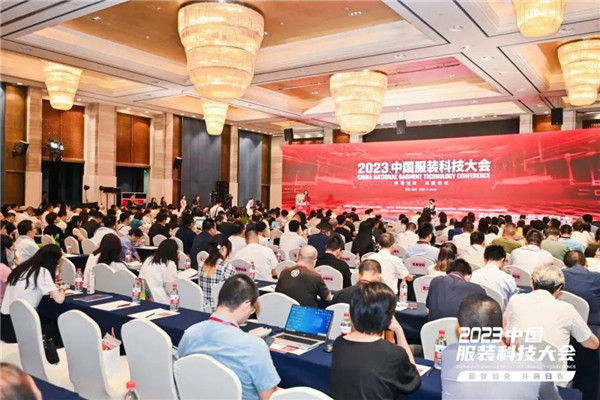
Our complete set of Zhilian solutions can achieve 100 types of daily sewing without stopping, ultra high precision cutting, real-time evaluation of employee skills, and a 60% improvement in hanging efficiency. "Ruan Jixiang, founder and chairman of Jack Stock, introduced that Jack's complete set of Zhilian solutions currently include products such as Fast Reverse King, S80, Working Time, Flexible Hanging, MES, PDM, etc., with overall software and hardware integration, helping enterprises achieve flexible manufacturing production scheduling.
Through Jack's intelligent hanging series solution, women's clothing brand COCOBELLA has achieved a 40% labor saving and a 30% reduction in change time. Zhao Jie, the general manager of the company, stated that the intelligent hanging series solution realizes the full process informatization of cutting online and clothing offline, and can quickly respond to online sales situations.
In the view of Si Huijuan, a senior expert in supply chain planning at Senma, the contradiction faced by clothing brands in achieving flexible rapid response lies in how to balance the rhythm of hot selling product production and unsold inventory. This is the key for brands to accurately place orders, reduce turnover inventory pressure, and increase profitability.
Wu Aihong, Director of Product R&D and Procurement at SKECH, believes that expanding the universal range of various product materials is also one of the channels to achieve flexible quick response. In addition, supply chain enterprises can better assist customers in achieving forward-looking operations by embedding brand planning needs in the front-end.
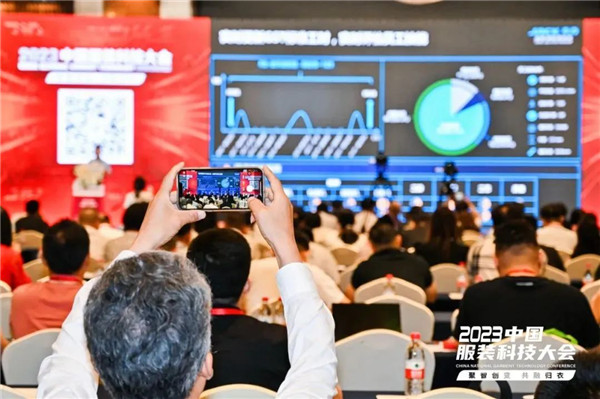
The complex and unpredictable global environment places higher demands on the flexible response of supply chains, not only in China's clothing industry seizing digital opportunities, but also in the global clothing industry.
Wang Xiaochu, the regional procurement director of Decathlon Textile Department, said that inspired by the automotive industry, Decathlon used efficiency to solve costs and adopted innovative production of cell flow, that is, the introduction of cell unit production mode in the production of textile and clothing products to cope with the challenge of multiple small orders. This production method has a significant efficiency advantage in simulating multiple products with a total order quantity corresponding to the sewing production cycle according to the learning curve of a single model, which is less than 8 days and each model has a quantity of less than 200 pieces.
Wu Dejiang, Chairman of the Vietnam Textile and Clothing Association, stated that Vietnam's competitive advantage in production is labor resources, and the development direction is gradually shifting towards producing high-value orders. In order to achieve the goal of building a Vietnamese independent clothing brand by 2035, Vietnamese clothing enterprises need to make up their minds to carry out digital transformation and green production, and apply new technologies and technologies in production processes and management. He also stated that the Vietnamese clothing industry will deepen cooperation with technology enterprises in neighboring countries and regions, and work together for a win-win situation.
Industry digitization is the trend of the times and industrial development. Chen Dapeng stated that technology is not only a tool, but also a concept and strategy that requires the protection of organizations, mechanisms, management, talents, and other factors. The Chinese clothing industry should firmly adhere to the vision of technology, fashion, and green industries, and meet the people's aspirations for a better and fashionable life. The Chinese clothing industry is bound to embark on a high-quality development path in the digital economy era.